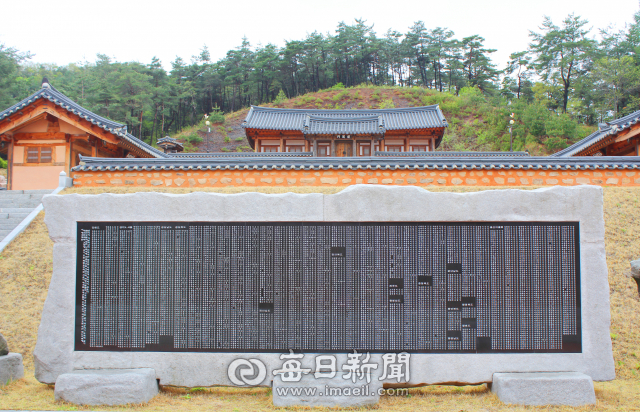
About 18% of independence fighters during the late Joseon period came from Gyeongsangbuk-do.
Cheongsong produced 93 independence fighters, the largest number of all si and gun in Korea.
Cheongsong is sacred place of national salvation.
Ancestors in the Cheongsong area fought more fiercely for the country than in any other area during the late Joseon period and died for the country without any regret.
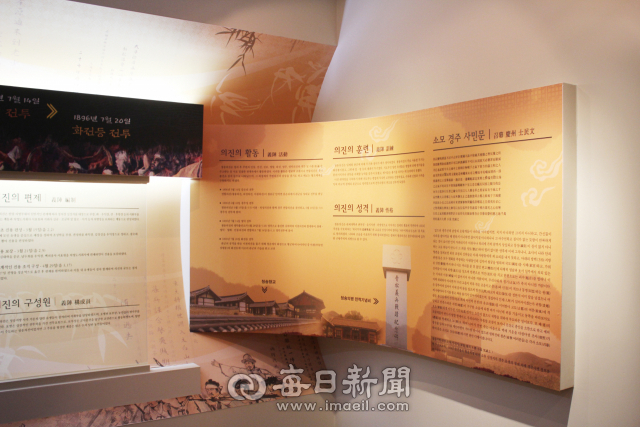
In the small mountainous village Cheonsong, scholars who read books, farmers who weeded fields, and women who sewed clothes at home had the same mind when it came to national salvation.
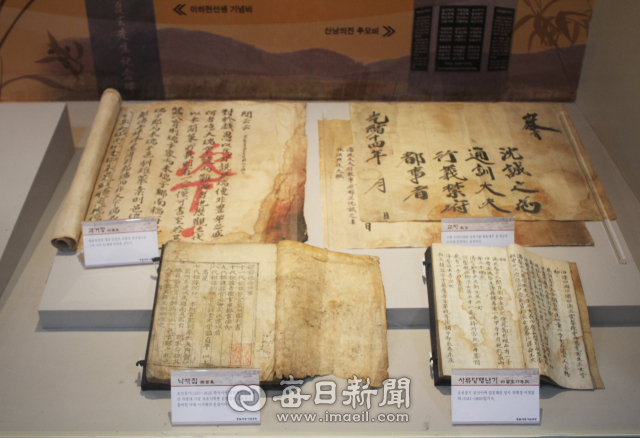
Because a huge number of independence fighters were killed in 1896 (byeongsin year) when the anti-Japanese struggle arose in Cheongsong, descendants have lived without knowing the history of independence fighters in the area.
Fortunately, their lofty achievements, large and small, were brought to light one after another since 1995 when the field diary written during the byeongsinchangui was discovered.
As 3.1 Independence Movement against the Japanese Empire spread across the country on March 1, 1891, residents of the Cheongsong area came out to the market place, waiving Taegeukgi, the Korean national flag. Peaceful demonstrations were held, and a wave of Taegeukgi was formed across the Cheongsong area, from the southernmost Hyeonseo-myeon to the northernmost Jinbo-myeon.
Independence fighters against the Japanese colonial rule and byeongsinchangui

On October 8, 1895 (the 32 year of year of King Gojong's reign), a political upheaval masterminded by Miura Goro, the Japanese minister to Korea, took place. And Empress Myeongseong was stabbed to death during the political upheaval. The upheaval, called the assissination of Empress Myeongseong, was aimed at strengthening the Japanese power on the Korean Peninsula. Afterwards, Japan carried out the Eulmi reform under the pretext of opening up the door to Joseon by appointing figures were faithful to Japan. The reform was forcibly implemented at a time when the Empress was ruthlessly murdered and the Joseon government was severely swayed, which led the Korean people to harbor excessive hostility towards Japan beyond opposition. In the meantime, the so-called "ordinance prohibiting topknots" forcibly went into effect and the Korean people were compelled to cut their topknots inherited from their parents although they lived on the foundation of Confucianism. Such one-way policies prompted a movement of anti-Japanese and anti-opening, led by Confucian scholars.
Loyal army's resistance took place in Cheongsong in 1896, and it was led by Sim Seong-ji (Pen name: Soryu, 1831-1904), who was from the Cheonsong Sim clan. Their command unit was located at an inn in Cheongsong-gun. Soryu, who was well-versed in Confucianism and was over 60 at that time, was resolute in determining to protect the nation and many people wholeheartedly followed him as independence fighters. On May 14 1896, a battle broke out at Gameun-ri, Cheongsong. Cheongsong's anti-Japanese loyal army carried out a cooperative offensive against Japanese troops moving towards the north, in cooperation with Icheon's anti-Japanese loyal army led by Kim Ha-rak (1846-1896) and Uiseong's anti-Japanese loyal army led by Kim Sang-jong (1847-1909). At that time, Cheongsong's anti-Japanese loyal army consisted of 75 leaders from the nobility and about 180 people such as hunters, farmers, and peddlers, none of whom had never received any military training.
Nevertheless, they were armed with such strong patriotism that they would not back down until the last moment. They killed 10 Japanese soldiers, making other Japanese combatants run away. Historians regarded the Gameun-ri battle as extraordinary. They said that if the loyal troops had failed in defeating the Japanese troops, the Japanese troops could have extended their power to the central part of the Korean peninsula. Seo Jeom, the director of the Anti-Japanese Loyal Army Memorial Park, Cheonsong, said, "The Royal Army Day was designated as a national holiday in 2010 in order to succeed to their patriotism and their spirit of loving the people and to remember the historic meanings of loyal troops who voluntarily stood up against Japan at a time of national crisis."
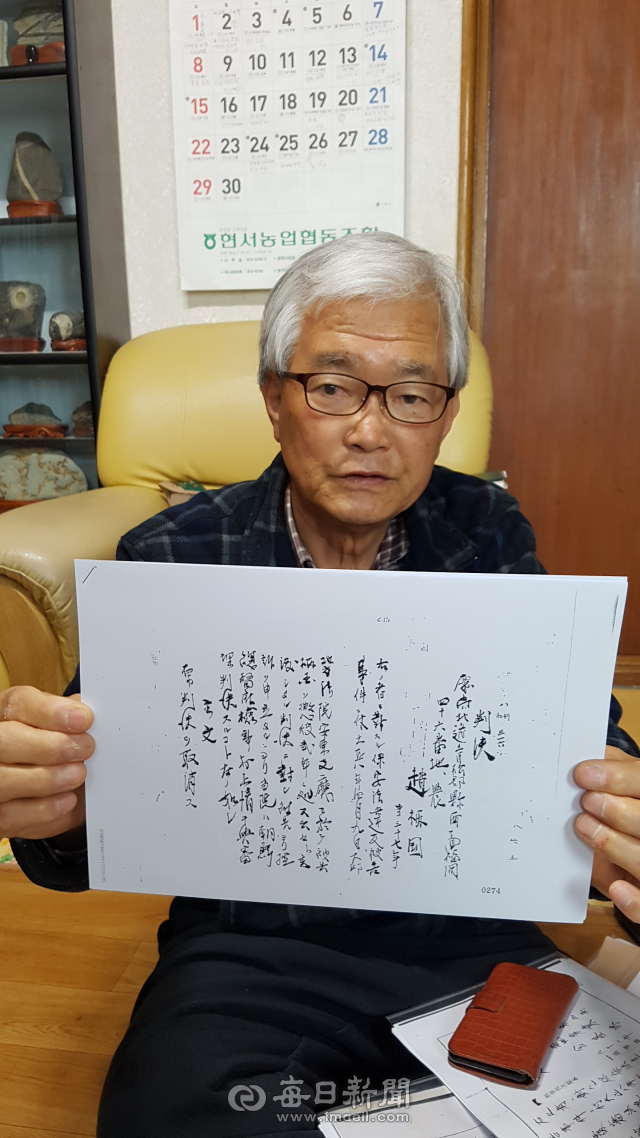
Cheongsong's anti-Japanese loyal army and the 100th anniversary of Cheongsong Royal Troops Resistance and 3.1 Independence Movement
Anti-Japanese Loyal Army Memorial Park and Jeogwonilgi and Gyeongseoryupyeon
The ceremony in honor of anti-Japanese loyal armies is held annualy at Anti-Japanese Loyal Army Memorial Park, Cheongsong, jointly by local governments of Gyeongsangbuk-do and Cheongsong-gun. The ancestral tablets of loyal armies whose soldiers were killed in the fighting against Japan across the country, are enshrined at Chunguisa Shrine, located in Anti-Japanese Loyal Army Memorial Park, Cheongsong. Chunguisa Shrine accommodates the ancestral tablets of a total of 2,537 independence fighters including Ahn Jung-geun, who assassinated Ito Hirobumi, Choi Ik-hyeon, Heo Wui and Lee Kang-nyeon, and Sin Dol-seok, a commander of plebeian origin. A total of 468 independence fighters came from Gyeongsangbuk-do, accounting for about 18% of all anti-Japanese loyal armies operating across the country, Among the 468 independence fighters, 93 came from Cheonsong. It is confirmed that the number is, as of today, larger than that that of any other si or gun.
A memorial tower of significance was erected in 2016. It is Memorial Tower for Nameless Independence Fighters. It was set up in Cheongsong in an attempt to honor their meritorious deeds and pay respects to the souls of 150,000 independence fighters across the nation. Jeogwonilgi has contributes the most to the construction of Anti-Japanese Loyal Army Memorial Park in Cheonsong. The book which had been handed down through generations in the Cheongsong Sim clan was disclosed to the world in 1995, verifying the history of the Gameun-ri battle. Stories about Cheongsong's anti-Japanese loyal army taking part in the Gameun-ri battle had been handed down orally only until then.
Jeogwonilgi descibes what happened during the war. "Jeogwon" means red color, and the name Jeogwonilgi means that it is a diary written in the year of byeongsin (丙申). Jeogwonilgi is different from existing war diaries describing about war only because it describes independence fighters' family origins and operation methods in detail.
The diary also recorded the names of aristocrats who took part as Cheongsong's anti-Japanese loyal army and the amount of money they donated for soldier training and operation. The diary shows that 65 soldiers who worked at Daejangso as regular soldiers were paid one ryang a day and 48 soldiers dispatched to each area were paid two ryang, while working two days a month. The diary also says that the nobility donated over 3,000 ryang in setting up Cheongsonguijin at an early stage. It was tantamount to the amount of money which could buy several traditional Korean houses. The diary shows that all the residents in Cheongsong, noble or ignoble, took part in a campaign to protect their country as one and social leaders of the times carried out noblesse oblige (moral obligation corresponding to a high social status) when they donated their assets themselves for national salvation.
Cheongsong's independence fighters thought that being spiritually united, mature, and patriotic through Confucianism was as important as military resistance. Seo Seok-hwa (1860-1924), a son of Seo Hyo-won, a Uiyeongdo commander, who led Cheongsong's anti-Japanese loyal army, published Gyeongseoryupyeon (經說類編) with the aim to secure a pioneer status to resolve issues of the period and to be united by relying on the academic identity of the Jeongjae School, which was represented by Ryu Chi-myung (pen name: Jeongjae, 1777-1861). As the translated Korean version of Gyeongseoryupyeon was recently published by the Korean Studies Institute, its value is newly assessed.













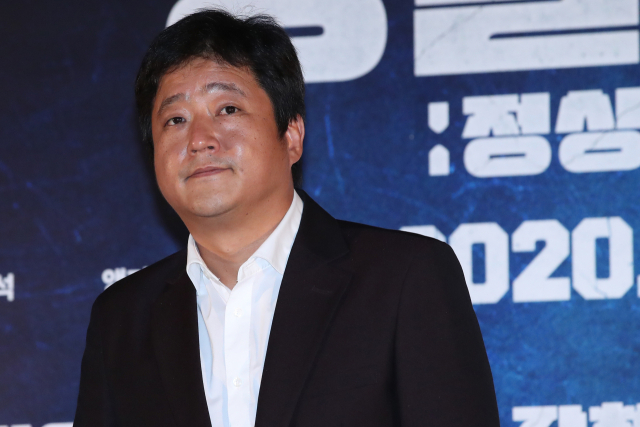
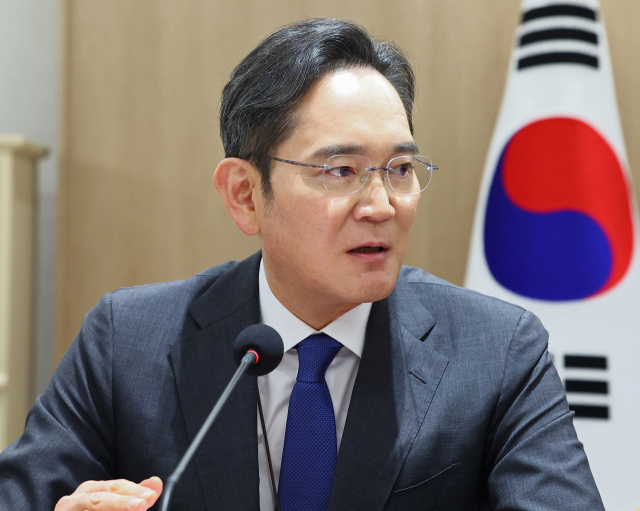
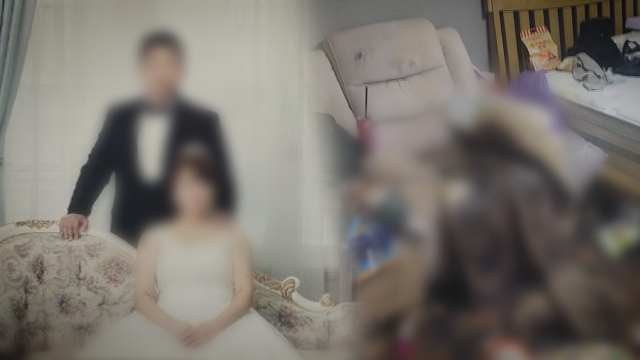




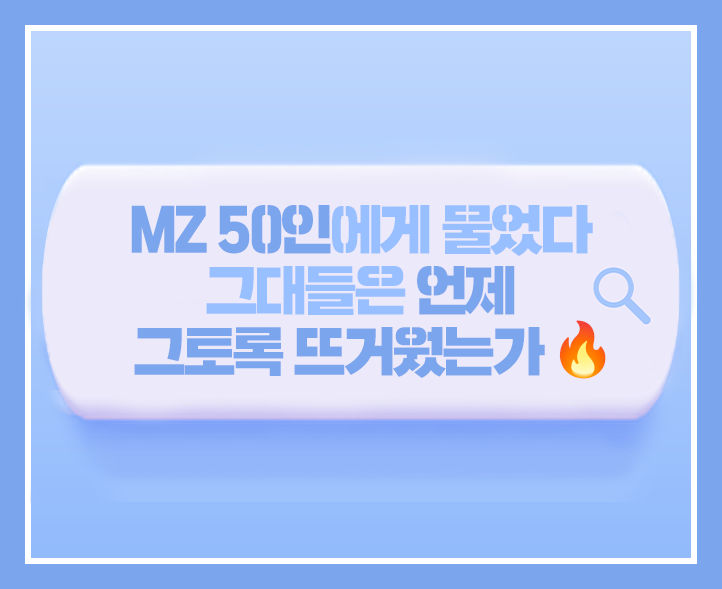
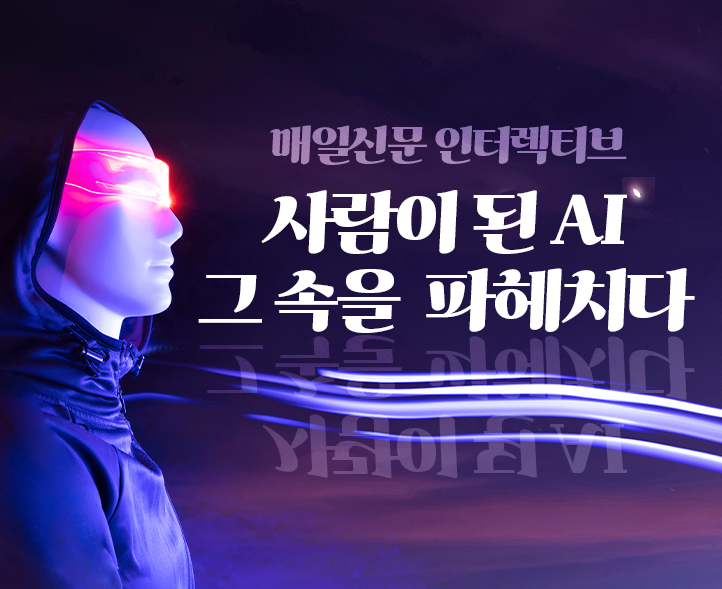

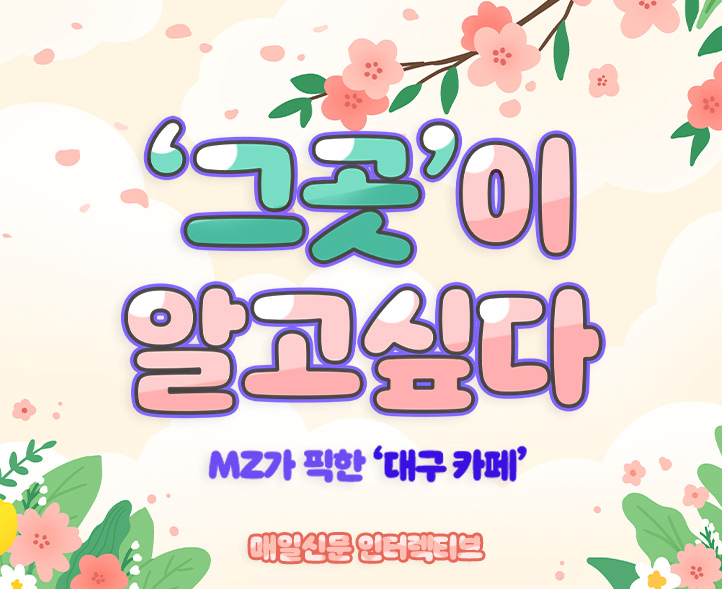

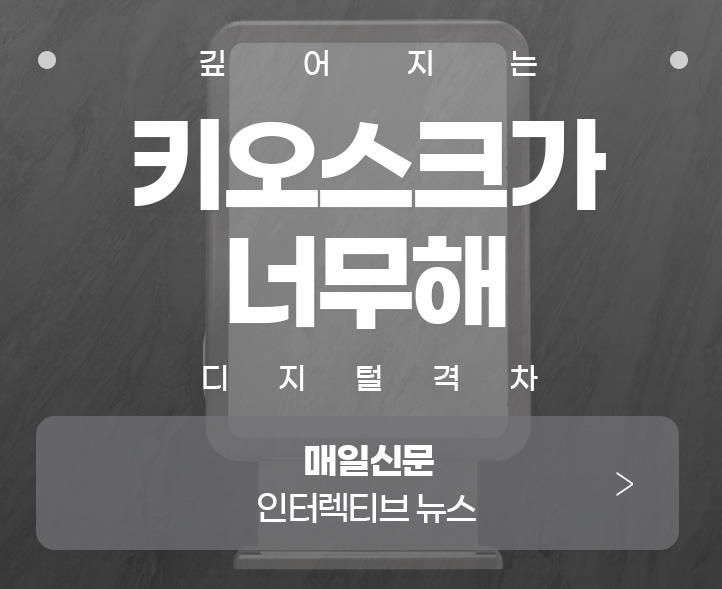












댓글 많은 뉴스
국힘 지지층 80% 장동혁 '당대표 유지'…중도는 '사퇴' 50.8%
李대통령, 이학재 겨냥? "그럼 '사랑과 전쟁'은 바람피는 법 가르치나"
李대통령 "북한이 남한 노리나?…현실은 北이 남쪽 공격 걱정"
李대통령 "'노동신문' 접근제한, 국민 '빨갱이'될까봐서? 그냥 풀면 돼"
장동혁 "당명 바꿀 수도"…의원 50여명 만나며 '쇄신 드라이브'